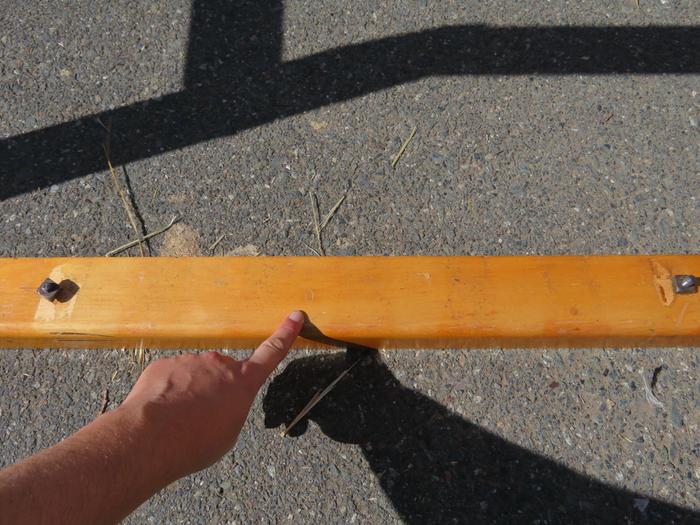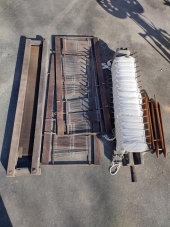posted 5 years ago
Wow! Great job! Yes, you've got some tough decisions to make! It seems to me that many of the wooden support parts are not complicated wood-working - it just takes the equipment, the measurements, and some quality wood. I don't know my woods all that well, but I know that it stretches and shrinks based on humidity, that it's more likely to split if it's not dried properly in the first place, and that for a job like this, fine grain is better than big grain. Am I correct in remembering that most of the Leclerc looms were made of maple?
You also need to consider if "function" is more critical to you than "form". If you will use it more and more comfortably if the cloth beam lifts out, to me that would be more important than looks. Is it actually set with the same number of inches of wood under its hole compared to the bottom of the hole that holds the removable one? I, too, would be very concerned about weakening that beam by cutting it, but if "function" is more important, I'd consider along with your wood-worker friend, how to reinforce that beam on the underneath or outside to accomplish the change safely. Working with old wood is much more likely to cause splits, so pre-drilling holes for fasteners and using quality wood glue rather than lots of fasteners seems the way to go from my limited experience.
It looks like you have two sets of lamms? If both are in good shape, I wonder if we could work a deal to try the spare with the Inca loom I have parts of? Just seeing the pieces of your looms put together are helping me picture what the Inca should look like. It has a *much* lighter frame and that means that the pieces have to be right or it won't keep itself true and square. If nothing else, just having a good look at your lamms will help me picture what the Inca's should look like. I think that wood beam on the Inca is thinner and lighter than larger Leclerc looms I've seen.
The Inca also has the beater missing. Someone appears to have tried to make a frame for the reed, but clearly had some idea other than a beater for their efforts as it has no "swords" at all (assuming the "swords" are the vertical pieces that pivot back and forth). We seem to have 3 looms here with *all* the "sword" bits missing which says to me that they're under engineered for the demands put on them! I'm sure it's a functional issue - it needs to be light enough that the weaver can use it for gentle fabric, but then people like me come along who used to make rag rugs (my BC days - before children) and needed to beat vigorously. I've got rugs I made 30 years ago that have been in almost daily use and still look fine, although the one that's had kitchen use for almost that long has now got broken warp threads and other signs of age. Those rugs were made on a 4 ft Leclerc Jack loom which has been in pieces since I married as there's simply no room for it. It has a foot-print of a double bed minimum.
I hope you manage to get this project to a place you're happy with. Good job so far, and good luck!






 2
2











 2
2























 2
2











 2
2











 2
2











 2
2




 2
2




 3
3











 4
4











 2
2

















